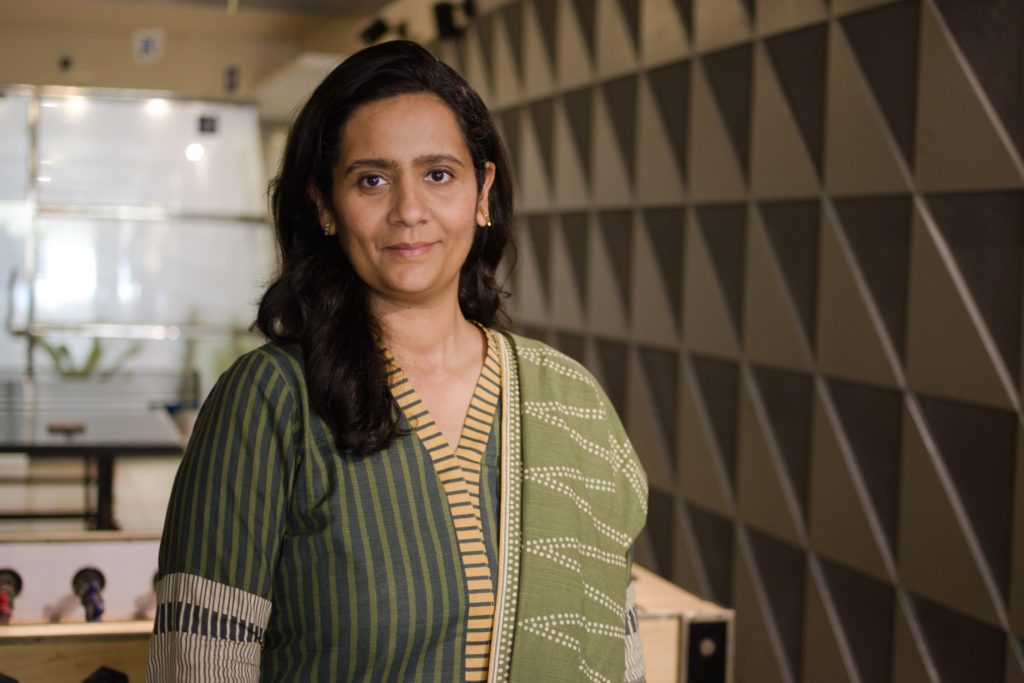Kim Stroh walks the walk when it comes to environmental sustainability, social goals and responsible governance. “I’ve immersed myself in the GHG Protocol Corporate Accounting and Reporting Standard trying to understand it from a technical point of view and am working with our legal and operations people on our DEI effort,” said Stroh, chief digital & information officer at the climate management and accounting platform company Persefoni.

Like a growing number of other strategic IT leaders, Stroh has become the keystone in a successful ESG program. Not only are CIOs entrusted with developing the systems and tools to collect, scrub, analyze, verify and report the organization’s ESG data, they’re increasingly viewed as the person with the right competencies and reach to tie the entire ESG process together.
“Four years ago, CIOs had little to no involvement in ESG,” said Sanjay Podder, technology sustainability innovation lead at Accenture. “That’s changed dramatically, with more than half of CIOs in our research having this stake now, as it is clear that technology is the big enabler of ESG transformation.”
Podder’s last comment underscores the growing role of CIOs and CTOs in architecting the technology infrastructure to ensure accurate and compliant disclosure of ESG data. No other corporate leader has the strategic competence, technological skills and knowledge of the business to be this architect, much less the rigor and patience to optimize IT systems for inevitable ESG disclosures and reporting.
Two ESG-related public company reporting proposals by the Securities and Exchange Commission have been unveiled, one involving a company’s climate change risks and the other its cybersecurity risks. A third SEC proposal on human capital management policies is expected before the end of the year. Driven by investor appeals for clearer ESG risk transparency, the proposals put the onus on companies to invest in technologies simplifying the collection, measurement and analysis of ESG data.
Who is expected to vet, buy and use these tools? “More companies are relying on their CIO to build the pipelines capturing the ESG data points,” said Zachary Coseglia, managing principal and co-leader of R&G Insights Lab, a pioneering full-service legal practice focused on analytics and behavioral science. “The CIO may not be the one establishing ESG key performance indicators, but they’re more than likely in charge of setting the internal and external data strategies supporting the collection and measurement of the ESG data.”
These strategies are impeded by a “cart before the horse” obstacle. As Podder put it, “There’s no question that ESG goals are on the agenda for CIOs; the problem is that only 7 percent of companies have fully integrated their technology and ESG strategies.”
Trust and Verify
While ESG is a subject that seems to be of recent vintage, the term was coined by the United Nations in October 2005, in a landmark study titled, Who Cares Wins. What is different then and now, aside from the increasingly perilous state of the planet and more divisive social issues, is the quantum leap in technology.
Extraordinary cloud and AI-enabled software and technology tools imagined in sci-fi novels 17 years ago are now real and in hand. Also transformed is the demand for ESG accountability by companies. Not just investors are clamoring for greater transparency into ESG performance metrics; employees and customers have joined the fray.
Seventy percent of customers in a recent survey said they are willing to cancel a relationship with a brand that does not take sustainability and social initiative seriously. Nearly as many employees (69 percent) would leave their current employ to work for a company that has a greater focus on ESG issues. What once was a nice-to-have is an absolute must-have.
The findings of the survey of more than 11,000 consumers and business leaders, by technology company Oracle and Pamela Rucker, an instructor in Harvard University’s professional development organization, underscore the elevated role of ESG in business management. Nearly all the respondents (94 percent) believe not enough progress has been attained on sustainability and social efforts. Nearly as many (89 percent) believe that organizations using technology to drive sustainable business practices will be the ones that succeed in the long run.
While leadership of an organization’s ESG practices is likely to be shared across the C-Suite, the CIO is expected to become a focal point of action. “CIOs and CTOs have a lot of expertise around data comparability, consistency, periodicity and the linearity of the data flow,” said John Quealy, chief investment officer and portfolio manager of the ESG Global Equity strategy at Trillium Asset Management. “This puts them in an opportune position to apply these competencies to ESG data.”
This is especially the case with CIOs closely involved in their company’s strategic direction and operations. Knowing where the business is headed and the ESG risks thwarting its income, employment and cost structure put strategic CIOs in the catbird seat to design and implement superior ESG systems. “Given the massive and complex sets of data with compliance implications from a verification and trust standpoint, companies need someone they can hold accountable for optimal ESG performance,” Quealy said.
Coseglia echoes these comments. “Data and technology have become a huge part of how business is done today, and the CIO is at the forefront in managing how work is done easier and faster,” he said. “Since ESG data is very much a `trust and verify’ high-level strategic issue…to understand where risks are materializing, someone has to be held accountable.”
That “someone” is the CIO. “Fortunately, more and more CIOs have teams staffed with data scientists to do the ESG analyses to stop the bad things from happening,” Coseglia said.
These risks are not confined to the rest of the enterprise itself, with a company’s tech stack factoring into the volume of greenhouse gas emissions produced. A 2018 report by The Shift Tank, a carbon transition think tank, stated that the internet and the systems supporting it account for about 3.7 percent of global greenhouse gas emissions. “The CIO plays a major role in the technologies the company invests in, which in turn have sustainability implications,” Podder said.
Accenture, Microsoft, GitHub and other companies are among the founders of the nonprofit Green Software Foundation, he said, whose remit is to encourage tech companies to develop greener software products and applications and move IT systems from on-prem environments that produce higher carbon emissions to the cloud. “One clear way for CIOs to help lead their organization’s sustainability efforts is right there in their own backyards, by investing in more energy efficient technology.”
Taking Charge
No one would dispute that the accountability inherent in overseeing the deliverance of ESG performance metrics is challenging, given likely compliance mandates and the reputational risks involved. “Due to the alphabet soup of ESG reporting standards and guidelines out there, the ability to collect, aggregate, measure and report ESG data with transparency and auditability is not a walk in the park,” said Stroh. “Fortunately, we are tech-first thinkers here.”
She’s referring to Persefoni’s business model. The company’s Software-as-a-Service platform is designed to enable customers to address their climate risk disclosures without reliance on consultants and the use of time-consuming and labor-intensive spreadsheets.
“We’ve set up our platform to make the emissions calculations easy and with the highest degree of transparency and trust; I say this knowing that we eat our own dog food, using the platform for our own climate risks,” she said.
The platform recently was upgraded to assist companies to measure and report so-called Scope 3 greenhouse gas emissions across the value chain, a requirement in the SEC’s climate risk proposal. “In our own case, we’ve wired up the platform to our accounts payables system…to understand the emissions produced by our vendors and suppliers,” said Stroh.
Other CIOs are staking a claim on leading their companies’ ESG initiatives. At Z2C Limited, for instance, CIO Fariha Rizwan personally spearheaded a company-wide effort to reduce the energy consumed by workers’ use of computers.

“I’m sitting in Karachi today as the heat is reaching unprecedented levels and just read that Denmark and other parts of Europe have broken heat wave records,” said Rizwan at the Karachi, Pakistan-based media-focused venture capital firm. “Computers are a contributor to these emissions; if you reduce the number of computational tasks, you reduce overall power consumed and related emissions.”
Earlier this year, Rizwan worked with an outside tech consultant to redesign the firm’s ERP (enterprise resource planning) system to make work tasks faster. “By removing layers of hierarchy and revising how tasks are designed and delivered, we were able to decrease the operational time of tasks by one-tenth in the aggregate, from nearly 20 minutes per task, for example, to less than two minutes,” she said.
The CIO also led an initiative to reduce the use of traditional printers and paper by offering card scan alternatives. The tools use optical character recognition technology to automatically scan, save and access documents, as opposed to printing them.
“We did something similar five years ago at Unilever, where I previously worked,” she said. “To bring home how important the project was to users at Unilever, we tabulated how many trees were saved each time a certain volume of paper was reduced. Everybody rolled up their sleeves to do what they could.”
Rizwan added the CIO role is “perfectly positioned” to improve ESG outcomes. “By democratizing data to increase efficiency across the business, we’re in an advantageous place to lead efforts that reduce energy consumption and encourage less labor-intensive work,” she said.
A Competitive Value Proposition
Since ESG is now a key strategic issue for all companies, the CIO also is positioned to enhance a company’s competitive differentiation. A case in point is DEI (diversity, equity and inclusion), a major component of the S in ESG. “DEI is not just a workforce issue, it’s business strategy,” Coseglia said.
“DEI involves the setting of goals and the measurement of outcomes,” he explained. “The CIO is accountable for all the data collected and analyzed by the company, which now include DEI data to avoid adverse outcomes or bad decision-making.”
Down the line, to incentivize better ESG outcomes, the compensation of the C-Suite needs to be tied to ESG goals and metrics, Quealy said. “The days of paying lip service to ESG are dwindling. To support robust ESG domain knowledge, situational awareness and forecasting, compensation must be aligned with actual ESG performance,” he asserted.
Pressured by investors and other key stakeholders, a growing number of public companies like McDonalds and Caterpillar have begun to tie executive pay to ESG outcomes. A study by proxy advisory firm Glass Lewis indicates that the percentage of U.S. companies with an environmental or social metric in their executive incentive plans increased from 16 percent in 2019 to 25 percent in 2021.
“If executives are going to get paid based in part on ESG performance criteria, the data needs to be trusted and verified. Obviously, systems will need to be designed to provide this trust and verification,” said Quealy. “The C-Suite will increasingly expect CIOs to solve this problem and will hold them accountable for it.”
Podder shares this view. “ESG cuts across all CxO stakeholders, making each leader accountable for sustainable practices, lower emissions and decarbonizing efforts,” he said. “Among these stakeholders, the CIO is the common denominator, in the sense that they strengthen ESG on behalf of them all.”
As CIOs take on this mammoth responsibility, their lot will rise in the corporate hierarchy. The ascension assumes a CIO has what it takes—a depth of knowledge about ESG factors, the structured and unstructured data informing these factors, and the systems that need to be built to collect, verify and calculate this information for reporting, he added.
Coseglia concurred that ESG, whether CIOs are up to the task or not, is bound to fall into their laps. “All this work doesn’t happen,” he said, “without the CIO.”









